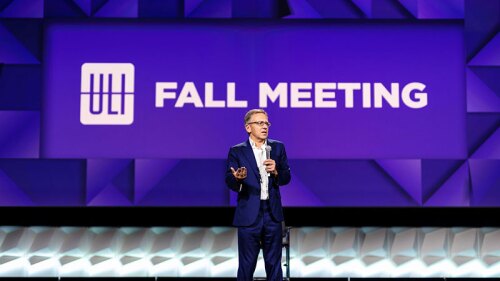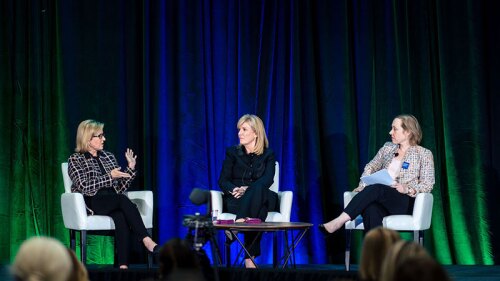Watch Rebecca Devine in a video where she talks about the industry’s initial fear about engaging the community and how opening the communication avenues will help get a projected developed.
Watch Brandon Palanker of Rennaissance Downtowns in a video where he talks about the importance of social media to the land use industry and discusses case studies that have produced tangible, measurable results.
The next decade will see an adjustment not only in how developers and commercial real estate professionals adapt to the emerging demands of baby boomers and generation Y, but also in how they market to these demographic cohorts in order to win public support for their projects.
With decreased budgets and a shaky economy, industry marketers are looking for creative and inexpensive ways to utilize new media technologies in order to enhance the bottom line. Savvy marketers know that social media have the ability to get people to conduct business online without actually feeling like they are conducting business.
Last month’s Urban Land Institute Fall Meeting panel titled “Social Media and Engagement” provided the audience with not only strategies for how the commercial real estate sector has made use of newer technologies, but also successful case studies from within the industry. The standing-room-only crowd listened to how companies like Bank of America and Jones Lang LaSalle have utilized social media to maximize their return on investment.
“The bottom line is that with social media you are building relationships,” said Rebecca Devine, principal, Maven Communications. “People prefer to do business with people they know.”
Addressing concerns about new media replacing traditional business activities, she added, “Social media [are] not a replacement for face to face, but it is an enhancement for it.”
To demonstrate this, Devine told audience members about the benefits of social media to growing brand awareness, becoming an industry thought leader, increasing web traffic, and improving sales. Arguing that social media are part of a firm’s marketing strategy, she described the situation of one her clients. This multifamily developer, with properties across the United States, wanted to reduce the number of phone calls to their help center. Her firm devised a system where people were able to go to online social media channels and submit their questions. The result was an online forum that allowed others to see similar questions and have them answered without having to actually contact the call center.
Panelist Roxanne Amoroso, senior vice president, Bank of America Merrill Lynch, presented her case study on how online marketing was able to be used for her mixed-use, urban infill project in Tampa, Florida. Encore wanted a communications strategy that raised not only public awareness, but also political awareness for the project in order to secure federal funding for its infrastructure construction. Encore hired a team of experts to create a Facebook page and a Twitter page to control the message and “bring the community alive in a very sustainable way,” she said.
According to Amoroso, the social media campaign has resulted in increased traffic to their website and a successful job fair that was hosted on the site. More than 5,000 people attended the fair and now the project has widespread support in the Tampa Bay region. In addition, Encore became the first infrastructure project to win federal funds to finance its entire infrastructure, she said.
Greg Maloney, chief executive officer, Jones Lang LaSalle Retail, told the audience how the retail sector is using social media. Two years ago, his company embarked on a social media journey that included video blogs, QR codes to promote leasing opportunities, iPad apps, and Facebook pages as part of their digital programs. He developed social media pages for each of his malls, integrating them with a retail customer loyalty program.
Maloney said that his company has learned that the best social media campaigns are usually the ones that are kept simple and integrated well into the company’s overall marketing efforts. He stressed that it is a mistake to engage only younger generations, but to also be aware of the specific demands of all age groups.
The highlight of the panel was a Bristol project developed by Renaissance Downtowns. Brandon Palanker, vice president of marketing and public affairs, said his company realized that residents of suburban communities are very worried about their neighborhood properties. He discovered that his firm needed to foster a two-way dialogue and engage the silent majority.
According to Palanker, the not-in-my-backyards (NIMBYs) and opponents are on Facebook. If you are a developer and you are not on Facebook, you will not have a voice—and the voice of online opponents will control the message, he said.
The company developed what it calls “crowd-sourced place making,” which included in-person meetings, but placed the internet at the heart of the campaign. The company created an online forum on Facebook along with an online voting application that allowed people to go online and speak with the developer. The campaign went viral and ended up giving local citizens an opportunity to shape the proposal by submitting ideas and voting on various aspects.
“We can’t build unless we have approvals in that entitlement process,” said Palanker. “We realized that by using social media—not taking the top-down developer approach, but really a bottom-up approach by engaging the community—is the only way to manage this process.”
Palanker’s efforts resulted in dramatic transformation in public opinion. A mixed-use downtown project that was originally opposed by the public was now the local buzz and was viewed as a positive economic driver for housing, public space, and local business development.
“Just telling someone why what you are going to develop is so great just does not work,” Palanker added. “We go nowhere without public support and legitimate public buy-in.”


